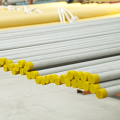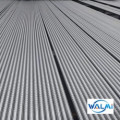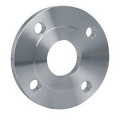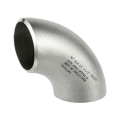Chemicals in oil refining / petrochemical production
Crude oil: brine / brackish water, chloride, sulfur compounds, naphthenic acid.
Produced in the production process: ammonia, ammonium disulfide, even polysulfuric acid, carbonic acid, cyanide
Added in the production process: sulfuric acid, hydrofluoric acid
| Chemicals | crafting process | influences |
| Amine compounds | Desulfurization (desulfurization) process | Uniform corrosion cracking |
| sulfuric acid | Alkylation | Uniform corrosion, Trench corrosion, Erosion corrosion |
| Hydrofluoric acid | Alkylation | Uniform corrosion cracking |
| Sodium hydroxide | Neutralize | Uniform corrosion cracking |
| Potassium carbonate | Remove acid gas (such as CO2) | Uniform corrosion cracking, Erosion corrosion |
Uniform corrosion
Corrosion is more evenly distributed on the surface of the material
The corrosion chart gives the approximate rate of uniform corrosion of materials in various chemical substances. However, in industrial production, most media contain many different chemical substances. Therefore, the corrosion chart data is for reference only.
Localized corrosion
Intergranular corrosion
Pitting corrosion / crevice corrosion
Stress corrosion cracking and sulfide stress cracking
Other types of localized corrosion
Intergranular corrosion
The formation time of chromium carbide depends on the carbon content and temperature of the steel;
In the conventional welding process, “L” grade stainless steel (carbon content up to 0.03%) will not form harmful chromium carbide;
For corrosion-resistant (aqueous solution) applications, welded parts should use the “L” or double grades;
In the high temperature environment for a long time, even “L” brand will form chromium carbide;
Stable grades such as 321, 316Ti, 347 or 316Nb use Ti or Nb to combine with C to form TiC or NbC. Consider using stabilized annealing to make all the carbon form TiC or NbC. The annealing temperature is generally 885 ° C, and the annealing time depends on the thickness, and is generally performed after welding.
Pitting corrosion / crevice corrosion
Usually caused by halide ions (commonly chloride ions) destroying a passivation film somewhere. Inside the pit or crevice, active corrosion begins to occur, while the surrounding metals are still in a passivated state (most commonly in Cr-containing alloys, but can also occur in Cr-free alloys);
Risk factors that increase corrosion include: oxygen increase, oxidizing ions, acidity increase, temperature increase;
For stainless steel, the pitting corrosion resistance is as follows:
PREN = Cr + 3.3Mo + (16-30) N
This formula can be used to roughly describe the ability of Cr-Ni-Mo nickel alloy to resist pitting corrosion;
Can also be tested according to ASTM G48 standard test pitting corrosion and crevice corrosion resistance;
Sorted by critical pitting temperature (CPT, G-48C) and critical crevice corrosion temperature (CCT, G-48D), some highly alloyed stainless steels have better pitting and crevice corrosion resistance than some nickel alloy.
| Material | %Mo | CPT ℃ | CCT ℃ | PREN |
| 316 | 2.2 | 20 | <0 | 25.3 |
| 825 | 3 | 30 | 5 | 33.6 |
| 6%Mo stainless steel | 6 | 75 | 35 | 48.4 |
| 625 | 9 | >85 | 35 | 51.7 |
| C-276 | 16 | >85 | 45 | 67.1 |
Prevent stress corrosion cracking
Eliminate or reduce stress, or change to compressive stress by:
-Redesigned to reduce applied stress
-Eliminate residual stress
-Shot peening the surface and introducing compressive stress
-The stress (such as bending) produced by welding and processing is the most common source of stress
Switch to alloys that are less prone to stress corrosion cracking;
Remove corrosives or change their properties, such as deoxidation and neutralization;
Reduce the temperature.
Application examples
Flue gas desulfurization
Processing quality is very important, especially high alloyed stainless steel;
Many failures stem from poor machining quality, including weld defects, rough grinding, and contamination caused by carbon steel tools or scaffolding.
Carbon capture and storage
At present, most processes use amine capture technology, the standard material is 316L, and 317L and 2205 with higher alloy content can also be used;
For coal-fired power plants, first remove SO2 and particulate matter through standard processes such as FGD and electrostatic dust removal, and then remove CO2.




